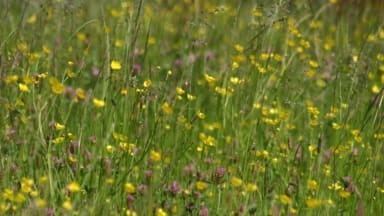
When BNG becomes mandatory from the 12th of February 2024, developers must use the metric to demonstrate a net gain for all planning applications (unless exempt). Those land managers looking to supply off-site units must also use this metric.
What does a ‘statutory’ biodiversity metric mean for BNG?
The metric ensures that, for the very first time, all habitats are afforded a value in the development process, not just the rarest or those with legal protection.
This metric must be used for the measure of mandatory biodiversity net gain (BNG), no other metric versions are acceptable. The use of a biodiversity metric does not replace existing ecological advice and expertise but should be used in conjunction with advice from an expert to scale the impacts of the project.
To complement the BNG metric, Natural England has published a GIS data import tool and technical guidance. These additional tools are not part of the statutory metric, but have been produced as an accompanying resource.
“The metric provides an evidence based and standardised way of accounting for habitat change scenarios. It’s a useful tool to communicate the value of nature to non-technical audiences. It enables the standardised measurement of habitat delivery on the ground in a way that has not been possible before’, explains Steve Panks, Principal Specialist Biodiversity Metrics Natural England
A simplified version, known as the small sites metric (SSM), has also been published. Smaller developments which meet the criteria to use the SSM will be able to use the corresponding small sites calculation tool when minor development BNG becomes mandatory in April.
How does the statutory biodiversity metric work, and why does it matter?
The metric uses habitats as a proxy for biodiversity and calculates biodiversity value for the purposes of biodiversity net gain (BNG). Biodiversity value is calculated in standardised biodiversity units.
The metric will provide insight for developers to break down the site into easily managed parcels to gauge gains and losses for each habitat parcel, to ensure they can make an informed decision to ensure the development achieves the minimum 10% biodiversity net gain.
Use of the metric, integrates BNG into scheme designs from site selection to outline design. It provides a transparent means of calculating when the net gain requirement has been met, including through the use of any off-site land.
For landowners, the metric will show the land’s current biodiversity value and how many off-site units could be produced through additional habitat creation or enhancement which could be sold to developers. Furthermore, the calculation will also establish how many additional units you may have available to sell to developers should you choose to commence habitat creation or enhancement works in advance, ahead of the development impact.
For decision-makers, such as local authorities, the calculation tool provides the necessary evidence that the statutory biodiversity metric has been used by the developer to meet the BNG requirement. It provides a more transparent means of determining what additional biodiversity value a development will deliver.
The metric:
- operationalises the mitigation hierarchy by quantifying biodiversity value helping to deter impacts on habitats with higher unit values. This is because more units need to be created to compensate for losses to these habitats. There are ‘trading rules’ which mean habitats need to be compensated on a like-for-like or like-for-better basis and any high distinctiveness habitats lost need to be compensated for with the same habitat type.
- incentivises delivery on or close to a development in the first instance, through the spatial risk multiplier, allowing developers to better integrate nature into development design, where ecologically sensible or practical to do so encourages creation and enhancement of habitats in places where they will add most value to wildlife using a strategic significance multiplier. Doing so enhances ecological connectivity to better enable wildlife to prosper and thrive.
Looking ahead
To provide certainty, government has committed to making major updates only to the metric following consultation, which will likely be between 3 and 5 years’ time. Natural England will continue advising Defra based on the best ecological evidence.

